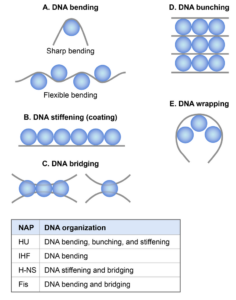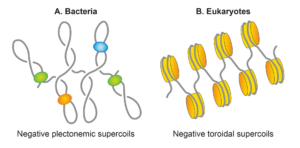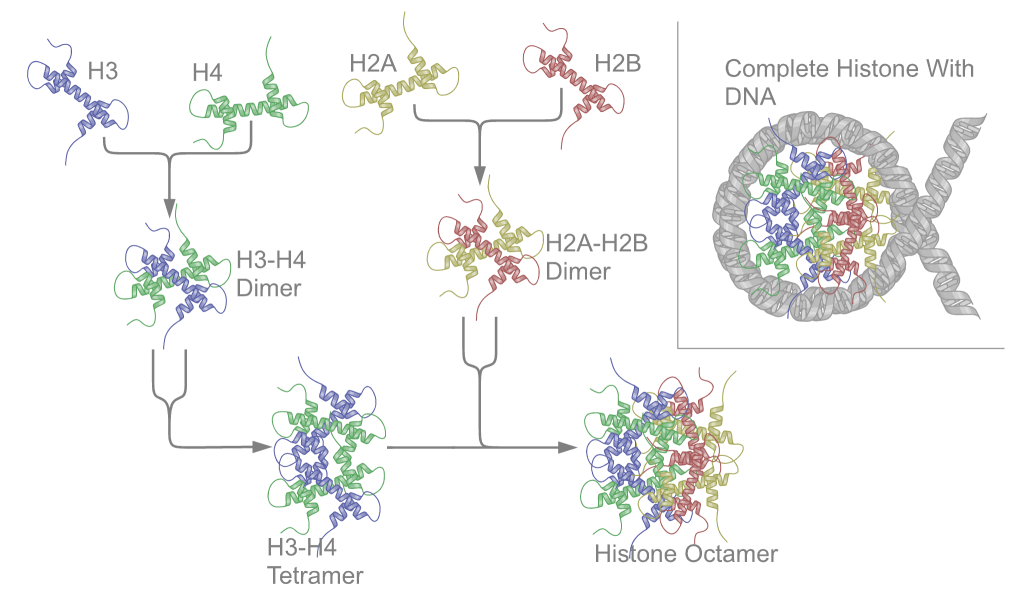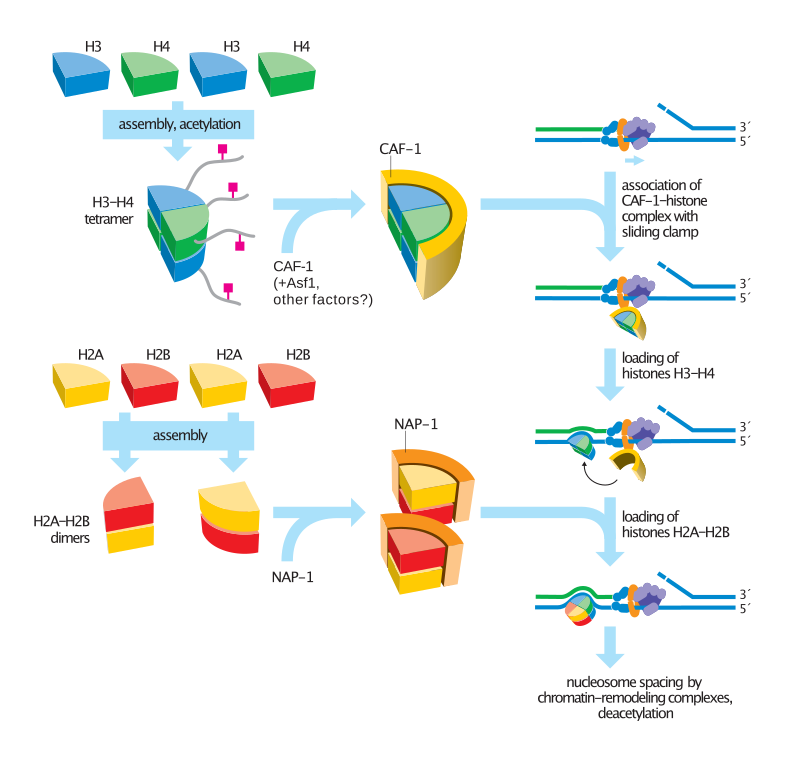Prokaryotes are primitive cells devoid of histones.
Histones are alkaline proteins that are associated with Eukaryotic DNA. They are responsible for genome packaging because eukaryotic DNA is very large in size.
Prokaryotic chromosomal DNA is very small and is associated and bound together by a different set of proteins called NAPs.
So if the question is asked “do prokaryotes have histones?” the answer would simply be a no. Histones are a feature unique to the eukaryotic chromosomal organizational system.
Why do prokaryotes not have histones?
Prokaryotes don’t have true chromosomes so they do not have histones.
Histones are technically used for packaging large chromosomes into a more manageable size. Prokaryotic DNA is small consisting of only one single chromosome.
Only some prokaryotes like those in Archae which serve as the bridge between prokaryotes and eukaryotes have been found to have histone proteins. This is probably because they have a more complex chromosomal system compared to the lower prokaryotes.
Non-chromosomal DNA as that in plasmids are only circular fragments of DNA and do not require any sort of special organization.
What do prokaryotes have instead of histones?
Prokaryotes have other proteins orNAPs for the purpose of chromosomal organization.
NAPs or Nucleoid-associated proteins are a bunch of polypeptides that have minute molecular mass. They bind the prokaryotic DNA present in the nucleoid and change its shape, structure and abilities.

By abilities, it means to alter the rate at which transcription and translation occur in the nucleoid DNA. Some NAPs can also bind to RNA and change the cell’s gene expression profile at the post-transcriptional level.
Nucleoid-associated proteins (NAPs) have a role in both nucleoid architecture and gene expression regulation, and it’s becoming clear that NAPs and transcription work together to provide the bacterial genome structure.
Do prokaryotic chromosomes have histones?
Among prokaryotes only Archeae possess histones.
Prokaryotes do not have a typical chromosomal structure enclosed in a membrane-enclosed nucleus. Technically so as to speak, they do not possess a true chromosome either.
This also supports the absence of histones that pack the chromosomal DNA inside a eukaryotic nucleus. Since prokaryotic DNA is very small and not as complex in structure as compared to eukaryotic DNA.

Image: Wikipedia
Instead, prokaryotic chromosomes are associated with a different set of proteins called as Nuceloid associate proteins o simply put as NAPs. NAPs are important for the bacterial chromosomal organisation, replication, segregation, repair, and expression.
Do eukaryotes have histones?
Histone proteins are inherently related to the eukaryotic chromosomal organization.
The DNA in eukaryotes can be as long as three metres. So some kind of anchor is required to condense this long chain and fit it into the nucleus of the cell which has a maximum diameter of 6 micrometres.
So the long DNA chain is coiled and then supercoiled to condense it into chromosomes that are again entangled so it can all fit into the cell nucleus. Each and every human cell contains 23 pairs of chromosomes (44 autosomes and 2 allosomes), all of which must fit into that tiny 6-micrometre nucleus
This requires a very efficient organisational system that must also take into account the chemical nature of DNA molecules. Hence histone proteins are basic in composition.
Do all eukaryotes have histones?
Histone-based chromatin organization in eukaryotes is a standard in nature.
Eukaryotes DNA size is very long and unlike prokaryotes, they can contain multiple pairs of chromosomes. The chromosomes must be efficiently condensed so that they can fit into the minuscule nucleus.
So the DNA binds around the DNA which then soils around it. The main concern is that the chromosomes must again uncoil and condense during mitosis and meiosis and recoil and untangle once cell division is over.

Image: Wikipedia
Prokaryotes have nucleoid-associated proteins or NAPs in place of histones that function similarly. This is because prokaryotic DNA is very small and can in total account for a single chromosome only.
Why do eukaryotes have histones?
Histones are the chromosome organizers inherent to eukaryotes.
Histones are simple polypeptides that are chemically basic in nature so that acidic DNA can coil around them and not come free. One can say they act as spools for DNA coiling.
The eukaryotic DNA can be very long, as long as three meters. This must fit into the cell nucleus which is only as big as 6 micrometres that too in mammals. Lower eukaryotes have even smalled nuclear sizes, but the genome size does not vary too greatly.
Even so, this DNA must all fit into the nucleus. The histones allow the long DNA threads to coil around them and supercoil to form a more constricted structure. However, this is not permanent.
The nature of Histone allows the DNA to uncoil and condense from chromatin to chromosome form during cell division. After cell division is complete the chromatin can again uncoil and go back to its thread-like chromatin form.
This freedom is presented to eukaryotic chromosomal DNA only due to the presence of histone proteins.
Also Read:
- Do prokaryotes have centrioles
- Do prokaryotes have telomeres
- Do prokaryotes have centrioles 2
- Do prokaryotes have exons
- Do prokaryotes have golgi 2

I am Trisha Dey, a postgraduate in Bioinformatics. I pursued my graduate degree in Biochemistry. I love reading .I also have a passion for learning new languages.
Let’s connect through linked in:
